CT
-
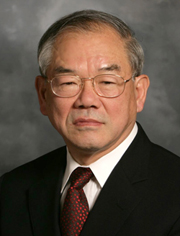 President Suh Speaks on Innovation in Asia at Glion Colloquium
KAIST President Nam-Pyo Suh stressed the importance of innovation in economic advancement in an address he delivered at the Glion Colloquium held in Glion, Switzerland, university authorities said on Wednesday (June 24).
In the speech, entitled "On Innovation Strategies: An Asian Perspective," President Suh said that for Asian countries such as China, Japan, Korea and Taiwan to continue to compete in the global economy, they must become innovators.
Over the past decade the Glion Colloquium organized by the University of Geneva has established itself as an influential international forum on higher education issues, related to research intensive universities in particular.
When it was launched in 1998, the Glion Colloquium immediately drew worldwide attention with “The Glion Declaration: the University at the Millennium,” prepared for the 1998 Paris UNESCO World Conference on Higher Education in the 21st Century.
Every two years, the colloquium brings together in Glion, Switzerland, leaders from renowned universities and higher education organizations, along with influential business and government figures, from North America, Europe and other parts of the world.
2009.06.25 View 10001
President Suh Speaks on Innovation in Asia at Glion Colloquium
KAIST President Nam-Pyo Suh stressed the importance of innovation in economic advancement in an address he delivered at the Glion Colloquium held in Glion, Switzerland, university authorities said on Wednesday (June 24).
In the speech, entitled "On Innovation Strategies: An Asian Perspective," President Suh said that for Asian countries such as China, Japan, Korea and Taiwan to continue to compete in the global economy, they must become innovators.
Over the past decade the Glion Colloquium organized by the University of Geneva has established itself as an influential international forum on higher education issues, related to research intensive universities in particular.
When it was launched in 1998, the Glion Colloquium immediately drew worldwide attention with “The Glion Declaration: the University at the Millennium,” prepared for the 1998 Paris UNESCO World Conference on Higher Education in the 21st Century.
Every two years, the colloquium brings together in Glion, Switzerland, leaders from renowned universities and higher education organizations, along with influential business and government figures, from North America, Europe and other parts of the world.
2009.06.25 View 10001 -
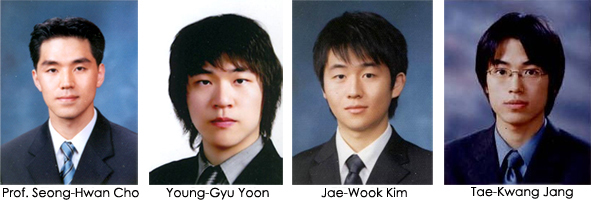 Prof. Cho's Team Awarded Best Paper Prize by IEEE
A team led by Prof. Seong-Hwan Cho of the School of Electrical Engineering and Computer Science, KAIST, won the 2009 Guillemin-Cauer Best Paper Award for their paper published in the IEEE Transactions on Circuits and Systems Journal last May, university authorities said on Thursday (June 4).
The team"s paper was entitled "A Time-based Bandpass ADC Using Time-Interleaved Voltage-Controlled Oscillators." The prize is given to a paper regarded as the best among about 350 papers published in the prestigious journal in the circuit theory area. Co-recipients of the award are Young-Gyu Yoon, Jae-Wook Kim and Tae-Kwang Jang. The award was presented at the annual 2009 International Symposium for Circuits and Systems in Taipei, Taiwan, on May 26.
The Institute of Electrical and Electronics Engineers or IEEE is an international non-profit, professional organization for the advancement of technology related to electricity. The New York-based organization has more than 365,000 members in about 150 countries making it the largest technical professional organization in the world.
2009.06.05 View 12769
Prof. Cho's Team Awarded Best Paper Prize by IEEE
A team led by Prof. Seong-Hwan Cho of the School of Electrical Engineering and Computer Science, KAIST, won the 2009 Guillemin-Cauer Best Paper Award for their paper published in the IEEE Transactions on Circuits and Systems Journal last May, university authorities said on Thursday (June 4).
The team"s paper was entitled "A Time-based Bandpass ADC Using Time-Interleaved Voltage-Controlled Oscillators." The prize is given to a paper regarded as the best among about 350 papers published in the prestigious journal in the circuit theory area. Co-recipients of the award are Young-Gyu Yoon, Jae-Wook Kim and Tae-Kwang Jang. The award was presented at the annual 2009 International Symposium for Circuits and Systems in Taipei, Taiwan, on May 26.
The Institute of Electrical and Electronics Engineers or IEEE is an international non-profit, professional organization for the advancement of technology related to electricity. The New York-based organization has more than 365,000 members in about 150 countries making it the largest technical professional organization in the world.
2009.06.05 View 12769 -
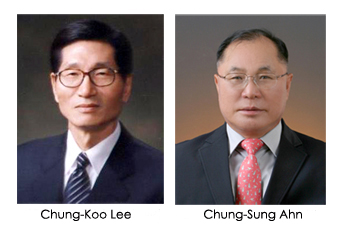 KAIST Appoints Two CEOs for Promotion of Innovative Projects
KAIST has appointed chief executive officers (CEO) for the two companies KAIST has recently established to carry out two innovative "low-carbon, green growth projects" supported by the Korean government, university authorities said on Monday (June 2).
Chung-Sung Ahn, a former executive of Hyundai Heavy Industries Co., a top shipbuilder of the world, was appointed as the CEO of the Mobile Harbor Co., and Chung-Koo Lee, a former president of Hyundai Motor Co., as CEO of the On-Line Electric Car Co.
The two companies have been newly established for the commercial operation of the mobile harbor and on-line electric car projects that KAIST has been working on.
KAIST has developed a plan to power electric cars through re-charging strips embedded in roadways. The university has built a prototype on its campus for electric-powered golf carts and worked on designs that would power cars and buses.
The mobile harbor system is motivated by a growing need for an innovative container transport service system to effectively meet continuing increase in global container shipping volume, KAIST has developed a system that can unload containers from a containership to a floating harbor in the sea and deliver them to a land terminal and load cargoes in a reverse way.
The 71-year-old Ahn of the Mobile Harbor Co. served as the president of the Offshore & Engineering Division and the Industrial Plant & Engineering Division of Hyundai Heavy Industries Co. from 2003 to 2005. He completed Advanced Management Program (AMP) from Harvard Business School in 1990. Ahn obtained Ph.D. in ocean engineering from MIT in 1972, M.S. in naval architecture from MIT in 1969, M.S. in meteorology/oceanography from MIT in 1967 and B.S. in Maritime Science from Korea Maritime University in 1959.
Chung-Koo Lee, 64, served as president of Hyundai Motor Co. from 1992 to 2002 and as a member of the Presidential Advisory Council on Science and Technology from 2001 to 2003.
2009.06.05 View 11246
KAIST Appoints Two CEOs for Promotion of Innovative Projects
KAIST has appointed chief executive officers (CEO) for the two companies KAIST has recently established to carry out two innovative "low-carbon, green growth projects" supported by the Korean government, university authorities said on Monday (June 2).
Chung-Sung Ahn, a former executive of Hyundai Heavy Industries Co., a top shipbuilder of the world, was appointed as the CEO of the Mobile Harbor Co., and Chung-Koo Lee, a former president of Hyundai Motor Co., as CEO of the On-Line Electric Car Co.
The two companies have been newly established for the commercial operation of the mobile harbor and on-line electric car projects that KAIST has been working on.
KAIST has developed a plan to power electric cars through re-charging strips embedded in roadways. The university has built a prototype on its campus for electric-powered golf carts and worked on designs that would power cars and buses.
The mobile harbor system is motivated by a growing need for an innovative container transport service system to effectively meet continuing increase in global container shipping volume, KAIST has developed a system that can unload containers from a containership to a floating harbor in the sea and deliver them to a land terminal and load cargoes in a reverse way.
The 71-year-old Ahn of the Mobile Harbor Co. served as the president of the Offshore & Engineering Division and the Industrial Plant & Engineering Division of Hyundai Heavy Industries Co. from 2003 to 2005. He completed Advanced Management Program (AMP) from Harvard Business School in 1990. Ahn obtained Ph.D. in ocean engineering from MIT in 1972, M.S. in naval architecture from MIT in 1969, M.S. in meteorology/oceanography from MIT in 1967 and B.S. in Maritime Science from Korea Maritime University in 1959.
Chung-Koo Lee, 64, served as president of Hyundai Motor Co. from 1992 to 2002 and as a member of the Presidential Advisory Council on Science and Technology from 2001 to 2003.
2009.06.05 View 11246 -
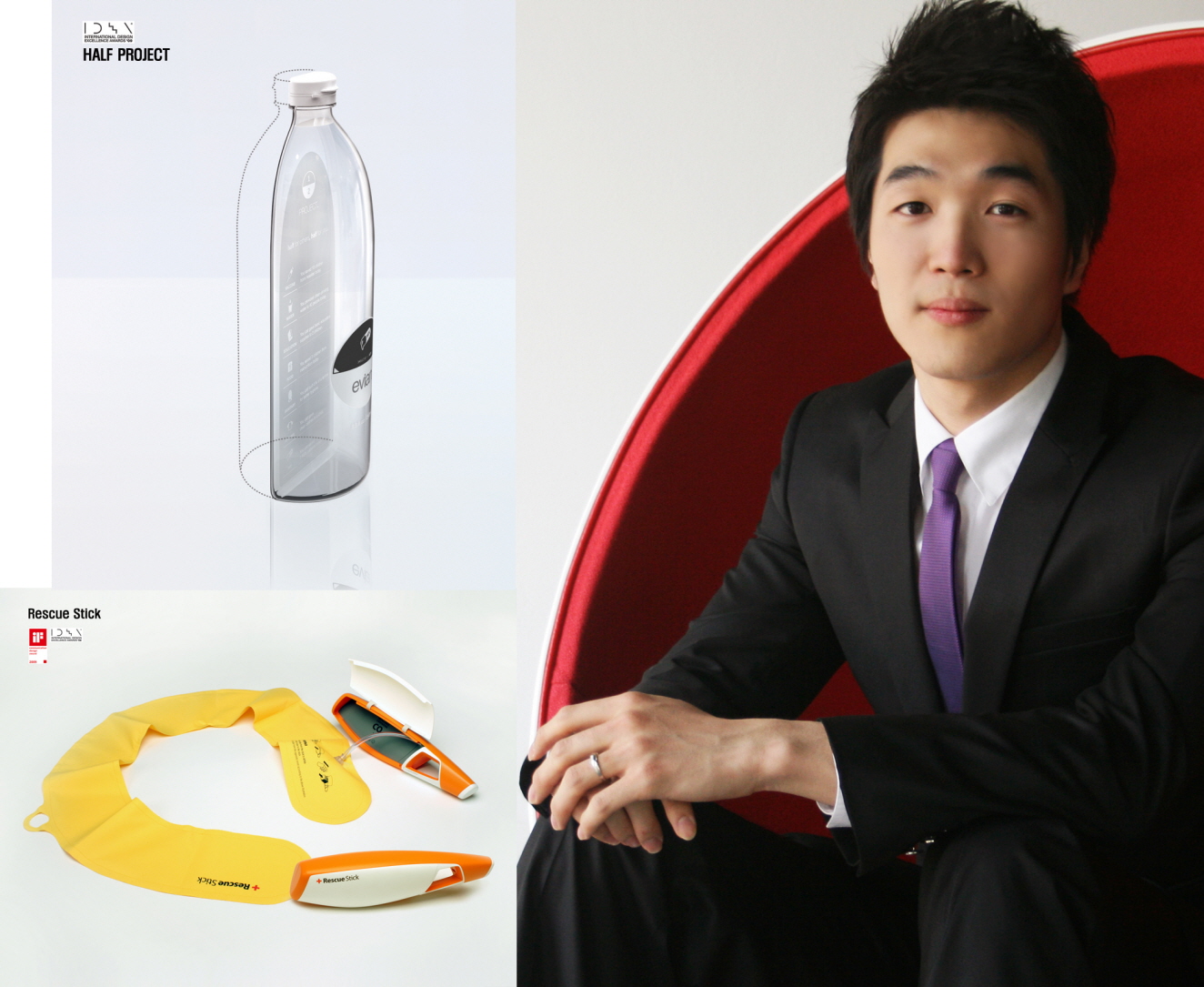 KAIST Senior Wins Prizes at International Design Contests
Sung-Joon Kim, a senior at the Department of Industrial Design, KAIST, has recently won the highest prize at the iF Communication Design Award held in Hanover, Germany, university officials said on Monday (June 3).
The prizewinning work entitled "1/2 PROJECT" introduces a donation system in which a customer buys a bottle of drink, for example, containing only a half of its price value and donate the remaining half of the value. The work which was created as part of the Samsung Design Membership was also awarded a silver prize at the International Design Excellence Awards (IDEA) of the United States.
Award ceremonies of the two prizes are scheduled for in Muenchen in August and in Miami in September, respectively.
"The design project is aimed at making donation a part of everyday life by teaming up with big-name beverage makers," said Kim.
iF Communication Design Award and the IDEA are among the world"s three leading international design competitions. The other one is the Red Dot Design Award presented in Essen, Germany.
Early this year, Kim, leading a team, presented a portable life saving equipment called "Rescue Stick" to the two competitions and won high honors.
2009.06.05 View 13311
KAIST Senior Wins Prizes at International Design Contests
Sung-Joon Kim, a senior at the Department of Industrial Design, KAIST, has recently won the highest prize at the iF Communication Design Award held in Hanover, Germany, university officials said on Monday (June 3).
The prizewinning work entitled "1/2 PROJECT" introduces a donation system in which a customer buys a bottle of drink, for example, containing only a half of its price value and donate the remaining half of the value. The work which was created as part of the Samsung Design Membership was also awarded a silver prize at the International Design Excellence Awards (IDEA) of the United States.
Award ceremonies of the two prizes are scheduled for in Muenchen in August and in Miami in September, respectively.
"The design project is aimed at making donation a part of everyday life by teaming up with big-name beverage makers," said Kim.
iF Communication Design Award and the IDEA are among the world"s three leading international design competitions. The other one is the Red Dot Design Award presented in Essen, Germany.
Early this year, Kim, leading a team, presented a portable life saving equipment called "Rescue Stick" to the two competitions and won high honors.
2009.06.05 View 13311 -
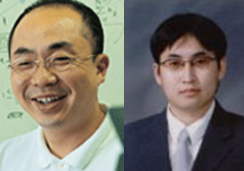 Prof. Chong Unveils New Human Movement Model
A KAIST research team headed by Prof. Song Chong of the School of Electrical Engineering and Computer Science has developed a new statistical model that simulates human mobility patterns, mimicking the way people move over the course of a day, a month or longer, university sources said on Tuesday (May 12).
The model, developed in collaboration with scientists at North Carolina State University, is the first to represent the regular movement patterns of humans using statistical data.
The model has a variety of potential uses, ranging from land use planning to public health studies on epidemic disease.
The researchers gave global positioning system (GPS) devices to approximately 100 volunteers at five locations in the U.S. and South Korea and tracked the participants" movements over time. By tracing the points where the study participants stopped, and their movement trajectories, researchers were able to determine patterns of mobility behavior.
The researchers were then able to emulate these fundamental statistical properties of human mobility into a model that could be used to represent the regular daily movement of humans. The model, called Self-similar Least Action Walk (SLAW), will have a wide array of practical applications.
The research, "SLAW: A Mobility Model for Human Walks," was presented on April 20 at the 28th IEEE Conference on Computer Communications in Rio de Janeiro, Brazil. The National Science Foundation of the U.S. funded the research.
2009.05.13 View 12864
Prof. Chong Unveils New Human Movement Model
A KAIST research team headed by Prof. Song Chong of the School of Electrical Engineering and Computer Science has developed a new statistical model that simulates human mobility patterns, mimicking the way people move over the course of a day, a month or longer, university sources said on Tuesday (May 12).
The model, developed in collaboration with scientists at North Carolina State University, is the first to represent the regular movement patterns of humans using statistical data.
The model has a variety of potential uses, ranging from land use planning to public health studies on epidemic disease.
The researchers gave global positioning system (GPS) devices to approximately 100 volunteers at five locations in the U.S. and South Korea and tracked the participants" movements over time. By tracing the points where the study participants stopped, and their movement trajectories, researchers were able to determine patterns of mobility behavior.
The researchers were then able to emulate these fundamental statistical properties of human mobility into a model that could be used to represent the regular daily movement of humans. The model, called Self-similar Least Action Walk (SLAW), will have a wide array of practical applications.
The research, "SLAW: A Mobility Model for Human Walks," was presented on April 20 at the 28th IEEE Conference on Computer Communications in Rio de Janeiro, Brazil. The National Science Foundation of the U.S. funded the research.
2009.05.13 View 12864 -
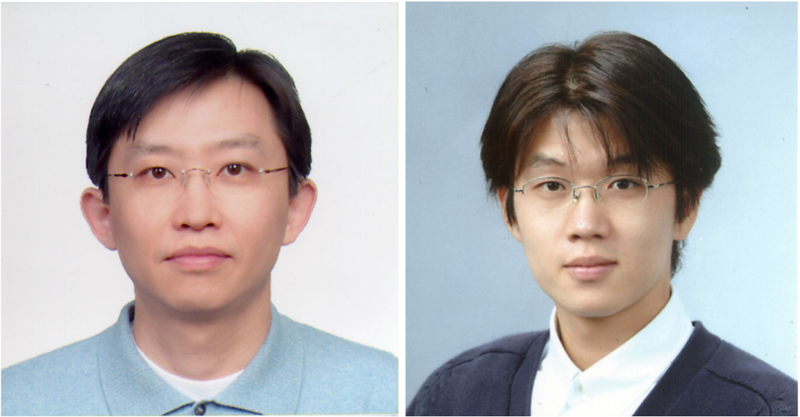 KAIST Professor Unveils New Method of Manufacturing Complex Nano-wire
A KAIST research team led by Prof. Sang-Ouk Kim of the Department of Materials Science and Engineering has discovered a new nanowire manufacturing method, university sources said on Monday (May 11).
The KAIST researchers successfully demonstrated soft graphoepitaxy of block copolymer assembly as a facile, scalable nanolithography for highly ordered sub-30-nm scale features. Graphoepitaxy is a new technique that uses artificial surface relief structure to induce crystallographic orientation in thin films.
Various morphologies of hierarchical block copolymer assembly were achieved by means of disposable topographic confinement of photoresist pattern. Unlike usual graphoepitaxy, soft graphoepitaxy generates the functional nanostrutures of metal and semiconductor nanowire arrays without any trace of structure-directing topographic pattern.
The discovery was featured in the May 7 edition of Nano-Letters. Application has been made for the domestic patent of the new method.
The new method is expected to be advantageous for multi-layer overlay processing required for complex device architecture, the sources said.
2009.05.12 View 10042
KAIST Professor Unveils New Method of Manufacturing Complex Nano-wire
A KAIST research team led by Prof. Sang-Ouk Kim of the Department of Materials Science and Engineering has discovered a new nanowire manufacturing method, university sources said on Monday (May 11).
The KAIST researchers successfully demonstrated soft graphoepitaxy of block copolymer assembly as a facile, scalable nanolithography for highly ordered sub-30-nm scale features. Graphoepitaxy is a new technique that uses artificial surface relief structure to induce crystallographic orientation in thin films.
Various morphologies of hierarchical block copolymer assembly were achieved by means of disposable topographic confinement of photoresist pattern. Unlike usual graphoepitaxy, soft graphoepitaxy generates the functional nanostrutures of metal and semiconductor nanowire arrays without any trace of structure-directing topographic pattern.
The discovery was featured in the May 7 edition of Nano-Letters. Application has been made for the domestic patent of the new method.
The new method is expected to be advantageous for multi-layer overlay processing required for complex device architecture, the sources said.
2009.05.12 View 10042 -
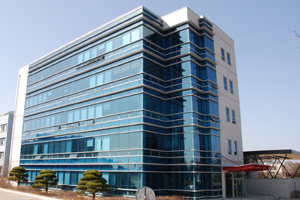 KAIST Dedicates Geocentrifuge Experiment Center
KAIST dedicated the KOCED Geo-Centrifuge Experiment Center for researches in monitoring natural disasters such as earthquake and embankment collapse through miniature simulation tests on Wednesday (April 9) after a two-year construction work.
The experiment center is part of the Korea Construction Engineering Development Collaboratory Program (KOCED) which has been sponsored by the Ministry of Land, Transport and Maritime Affairs to build an infrastructure for construction engineering researches at a national level. The ministry plans to build a total of 5 similar centers nationwide by the end of the year.
On hand at the dedication ceremony were Jae-Choon Lee, President of the Korea Institute of Construction & Transportation Technology Evaluation and Planning, KAIST President Nam-Pyo Suh, and scores of experts and administration officials.
The construction of the five-story building on an area of about 3,328 square meters cost 8.4 billion won (US$6.3 million).
The center is expected to serve as a major laboratory in the field of geotechnical engineering. It is equipped with such state-of-the-art facilities as geocentrifuge, a useful tool for studying flow in unsaturated soil under well-controlled, repeatable conditions, a bidirectional shaking-table that can reproduce earthquake-like wave; and robots that can reproduce construction procedures by remote control.
Geocentrifuge experiment allows detecting ground and structure motions easily and rapidly by simulation tests. Thus, it is widely used for various geotechnical engineering researches such as evaluation of seismic safety, soft ground movement, slope stability analysis, etc. The causes of the embankment collapse in New Orleans by Hurricane Katrina in 2005 were also revealed by the geocentrifuge experiment.
The geocentrifuge research facility is available for use by outside researchers, so scientists from other universities, research institutes and corporations can perform research and test their scientific and engineering hypotheses.
The center is divided into two sections, experiment building and research building. The experiment building is composed of a geocentrifuge laboratory, model-making rooms, workshops, a geotechnical engineering laboratory and specimen storehouse, while the research building has a control room, a video conference room, an electronic library and research rooms.
2009.04.09 View 12093
KAIST Dedicates Geocentrifuge Experiment Center
KAIST dedicated the KOCED Geo-Centrifuge Experiment Center for researches in monitoring natural disasters such as earthquake and embankment collapse through miniature simulation tests on Wednesday (April 9) after a two-year construction work.
The experiment center is part of the Korea Construction Engineering Development Collaboratory Program (KOCED) which has been sponsored by the Ministry of Land, Transport and Maritime Affairs to build an infrastructure for construction engineering researches at a national level. The ministry plans to build a total of 5 similar centers nationwide by the end of the year.
On hand at the dedication ceremony were Jae-Choon Lee, President of the Korea Institute of Construction & Transportation Technology Evaluation and Planning, KAIST President Nam-Pyo Suh, and scores of experts and administration officials.
The construction of the five-story building on an area of about 3,328 square meters cost 8.4 billion won (US$6.3 million).
The center is expected to serve as a major laboratory in the field of geotechnical engineering. It is equipped with such state-of-the-art facilities as geocentrifuge, a useful tool for studying flow in unsaturated soil under well-controlled, repeatable conditions, a bidirectional shaking-table that can reproduce earthquake-like wave; and robots that can reproduce construction procedures by remote control.
Geocentrifuge experiment allows detecting ground and structure motions easily and rapidly by simulation tests. Thus, it is widely used for various geotechnical engineering researches such as evaluation of seismic safety, soft ground movement, slope stability analysis, etc. The causes of the embankment collapse in New Orleans by Hurricane Katrina in 2005 were also revealed by the geocentrifuge experiment.
The geocentrifuge research facility is available for use by outside researchers, so scientists from other universities, research institutes and corporations can perform research and test their scientific and engineering hypotheses.
The center is divided into two sections, experiment building and research building. The experiment building is composed of a geocentrifuge laboratory, model-making rooms, workshops, a geotechnical engineering laboratory and specimen storehouse, while the research building has a control room, a video conference room, an electronic library and research rooms.
2009.04.09 View 12093 -
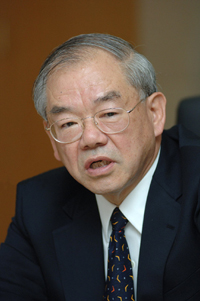 President Suh to Receive Honorary Doctorate from Romanian University
KAIST President Nam-Pyo Suh will receive an honorary doctorate degree from Babes-Bolyai University in Cluj-Napoca, Romania, in a ceremony at the university on April 3, school authorities said.
Andrei Marga, rector of the largest Romanian university, said in a letter to President Suh that the university decided to award Suh the title of Doctor Honoris Cause of Babes-Bolyai University, the highest academic honor of the university, in recognition of his "prestigious actions as academic leader of a university known worldwide and for contribution to cooperation between Romania and South Korea."
The university"s honorary doctorate is awarded to persons with illustrious achievements in the fields of science, technology, art, philosophy, and theology. Recent winners of the honor include Pope Benedict XVI; Cardinal Walter Kasper, President of the Pontifical Council for Promoting Christian Unity in Rome; Nobel Prize winners Rich Ernest of Switzerland and George Palade of the United States; philosophers Paul Ricoeur of France and Richard Rorty of the United States, among others.
The Babes-Bolyai University located in Cluj-Napoca with about 50,000 students offers education in three different languages, Romanian, Hungarian and German. It has the longest academic history in Romania, founded as a Jesuit college in 1581.
2009.04.02 View 11504
President Suh to Receive Honorary Doctorate from Romanian University
KAIST President Nam-Pyo Suh will receive an honorary doctorate degree from Babes-Bolyai University in Cluj-Napoca, Romania, in a ceremony at the university on April 3, school authorities said.
Andrei Marga, rector of the largest Romanian university, said in a letter to President Suh that the university decided to award Suh the title of Doctor Honoris Cause of Babes-Bolyai University, the highest academic honor of the university, in recognition of his "prestigious actions as academic leader of a university known worldwide and for contribution to cooperation between Romania and South Korea."
The university"s honorary doctorate is awarded to persons with illustrious achievements in the fields of science, technology, art, philosophy, and theology. Recent winners of the honor include Pope Benedict XVI; Cardinal Walter Kasper, President of the Pontifical Council for Promoting Christian Unity in Rome; Nobel Prize winners Rich Ernest of Switzerland and George Palade of the United States; philosophers Paul Ricoeur of France and Richard Rorty of the United States, among others.
The Babes-Bolyai University located in Cluj-Napoca with about 50,000 students offers education in three different languages, Romanian, Hungarian and German. It has the longest academic history in Romania, founded as a Jesuit college in 1581.
2009.04.02 View 11504 -
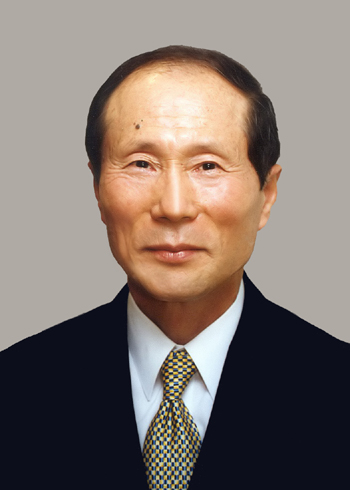 Respected Entrepreneur Chung Elected New Board Chairman of KAIST
Moon-Soul Chung, founder and former CEO of Mirae Corp. who is well known as the first-generation venture entrepreneur in Korea, was elected new chairman of the KAIST Board of Directors at the 193rd Regular Board Meeting held on March 20 in Seoul, school authorities announced Monday, March 23.
Born in 1938 in Imsil, North Jeolla Province, Chung graduated from the Oriental Philosophy Department of Won Kwang University. Chung founded Mirae Corp., a semiconductor equipment manufacturer, in 1983 and got his company listed on KOSDAQ and NASDAQ markets later. His business principles stressing transparency, integrity, and technology, earned the respect of Korean businesspeople.
In 2000, he suddenly announced retirement and handed over the presidency of his company to one of his managing directors. One year later, he donated 30 billion won to KAIST. It was by then the largest amount given by a single donor.
In 2007, he was awarded an honorary degree of doctor of engineering from KAIST. He formerly served as chairman of Venture Leaders Club, President CEO of Lycos Korea and chairman of the board of directors of Kookmin Bank.
2009.03.26 View 12442
Respected Entrepreneur Chung Elected New Board Chairman of KAIST
Moon-Soul Chung, founder and former CEO of Mirae Corp. who is well known as the first-generation venture entrepreneur in Korea, was elected new chairman of the KAIST Board of Directors at the 193rd Regular Board Meeting held on March 20 in Seoul, school authorities announced Monday, March 23.
Born in 1938 in Imsil, North Jeolla Province, Chung graduated from the Oriental Philosophy Department of Won Kwang University. Chung founded Mirae Corp., a semiconductor equipment manufacturer, in 1983 and got his company listed on KOSDAQ and NASDAQ markets later. His business principles stressing transparency, integrity, and technology, earned the respect of Korean businesspeople.
In 2000, he suddenly announced retirement and handed over the presidency of his company to one of his managing directors. One year later, he donated 30 billion won to KAIST. It was by then the largest amount given by a single donor.
In 2007, he was awarded an honorary degree of doctor of engineering from KAIST. He formerly served as chairman of Venture Leaders Club, President CEO of Lycos Korea and chairman of the board of directors of Kookmin Bank.
2009.03.26 View 12442 -
 KAIST Research Team Discovers Process for Rapid Growth of N-Doped CNT Arrays
A team of scientists led by Profs. Sang-Ouk Kim, Won-Jong Lee and Duck-Hyun Lee of the Department of Materials Science and Engineering has found a straightforward process for rapid growth of wall-number selected, nitrogen-doped carbon nanotube (CNT) arrays, university officials said on Monday (March 16).
KAIST researchers prepared highly uniform nanopatterned iron catalyst arrays by tilted deposition through block copolymer nanotemplates. This remarkably fast growth of highly uniform N-doped CNTs, whose material properties and chemical functionalizability are reinforced by N-doping, offers a new area of a large-scale nanofabrication, potentially useful for diverse nano-devices.
Carbon nanotubes (CNTs) are of broad technical interest in electronics, photonics, energy devices, and other applications. However, establishing a straightforward process for mass production of uniform CNTs with desired structure and properties has been a long-standing challenge.
In particular, it was strongly desired to precisely control the numbers of walls and diameter of CNTs, which are decisive parameters for the physical properties of CNTs. In this respect, the preparation of monodisperse catalyst array having a narrow size distribution is generally considered an effective pathway to produce well-defined CNTs, since the number of walls and diameter of the produced CNTs are closely related to the catalyst size.
The finding was featured in the March 13 edition of Nano Letters, a leading journal in the nano technology field.
2009.03.20 View 13139
KAIST Research Team Discovers Process for Rapid Growth of N-Doped CNT Arrays
A team of scientists led by Profs. Sang-Ouk Kim, Won-Jong Lee and Duck-Hyun Lee of the Department of Materials Science and Engineering has found a straightforward process for rapid growth of wall-number selected, nitrogen-doped carbon nanotube (CNT) arrays, university officials said on Monday (March 16).
KAIST researchers prepared highly uniform nanopatterned iron catalyst arrays by tilted deposition through block copolymer nanotemplates. This remarkably fast growth of highly uniform N-doped CNTs, whose material properties and chemical functionalizability are reinforced by N-doping, offers a new area of a large-scale nanofabrication, potentially useful for diverse nano-devices.
Carbon nanotubes (CNTs) are of broad technical interest in electronics, photonics, energy devices, and other applications. However, establishing a straightforward process for mass production of uniform CNTs with desired structure and properties has been a long-standing challenge.
In particular, it was strongly desired to precisely control the numbers of walls and diameter of CNTs, which are decisive parameters for the physical properties of CNTs. In this respect, the preparation of monodisperse catalyst array having a narrow size distribution is generally considered an effective pathway to produce well-defined CNTs, since the number of walls and diameter of the produced CNTs are closely related to the catalyst size.
The finding was featured in the March 13 edition of Nano Letters, a leading journal in the nano technology field.
2009.03.20 View 13139 -
 Workshop on Biomedical IC to Be Held on March 26
KAIST will hold a workshop on "biomedical IC for future healthcare system" on March 26 at a lecture room of the School of Electrical Engineering & Computer Science. The workshop is organized by SEECS and the Korean Institute of Next Generation Computing.
At the workshop, a variety of new technologies expected to expedite the development of biomedical systems will be presented. KAIST Prof. Hoi-Jun Yoo will speak on the "body channel communication" using the human body as the signal transmission medium and Dr. Seung-Hwan Kim of Electronics and Telecommunications Research Institute (ETRI) on a wearable vital sign monitoring system.
Other subjects are CMOS (complementary metal-oxide semiconductor) fully electronic biosensor for biomolecular detection to be presented by KAIST Prof. Gyu-Hyeong Cho; nerve interface and IC (integrated circuit) system design by KAIST Prof. Yoon-gi Nam; design of neural recording and stimulation IC using time-varying magnetic field by KAIST Prof. Seong-Hwan Cho; low power multi-core digital signal processor for hearing aid by Dong-Wook Kim, senior researcher at the Samsung Advanced Institute of Technology; and a non-contact cardiac sensor by KAIST Prof. Seung-Chul Hong.
With the advent of the ageing society, medical expenses of the elderly people are rapidly increasing. As a way to address the issue, interests are growing in "ubiquitous healthcare," a technology that uses a large number of environmental and patient sensors and actuators to monitor and improve patients’ physical and mental condition.
The upcoming workshop is the first academic event on biomedical integrated chips to be held in Korea. The workshop will provide a valuable opportunity for experts in biomedical area to get together and examine the present status of Korean biomedical area and discuss about its future, KAIST officials said.
2009.03.20 View 16601
Workshop on Biomedical IC to Be Held on March 26
KAIST will hold a workshop on "biomedical IC for future healthcare system" on March 26 at a lecture room of the School of Electrical Engineering & Computer Science. The workshop is organized by SEECS and the Korean Institute of Next Generation Computing.
At the workshop, a variety of new technologies expected to expedite the development of biomedical systems will be presented. KAIST Prof. Hoi-Jun Yoo will speak on the "body channel communication" using the human body as the signal transmission medium and Dr. Seung-Hwan Kim of Electronics and Telecommunications Research Institute (ETRI) on a wearable vital sign monitoring system.
Other subjects are CMOS (complementary metal-oxide semiconductor) fully electronic biosensor for biomolecular detection to be presented by KAIST Prof. Gyu-Hyeong Cho; nerve interface and IC (integrated circuit) system design by KAIST Prof. Yoon-gi Nam; design of neural recording and stimulation IC using time-varying magnetic field by KAIST Prof. Seong-Hwan Cho; low power multi-core digital signal processor for hearing aid by Dong-Wook Kim, senior researcher at the Samsung Advanced Institute of Technology; and a non-contact cardiac sensor by KAIST Prof. Seung-Chul Hong.
With the advent of the ageing society, medical expenses of the elderly people are rapidly increasing. As a way to address the issue, interests are growing in "ubiquitous healthcare," a technology that uses a large number of environmental and patient sensors and actuators to monitor and improve patients’ physical and mental condition.
The upcoming workshop is the first academic event on biomedical integrated chips to be held in Korea. The workshop will provide a valuable opportunity for experts in biomedical area to get together and examine the present status of Korean biomedical area and discuss about its future, KAIST officials said.
2009.03.20 View 16601 -
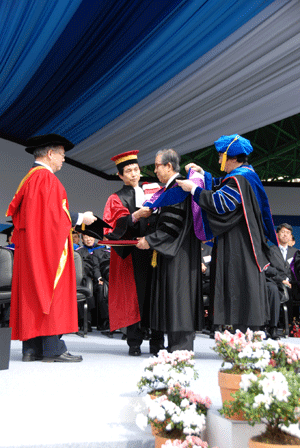 Oriental Medical Scientist Lyu Awarded Honorary Doctorate Degree from KAIST
KAIST awarded an honorary doctorate degree to Keun-Chul Lyu, an Oriental medical scientist who donated property valued at 57.8 billion won (US$56 million) to KAIST at its 2009 commencement ceremony on Feb. 27.
Dr. Lyu who was born in Cheonan, South Chungcheong Province, in 1926 received the first-ever doctorate degree in Oriental medicine from Kyung Hee University in 1976. His researches and practices have had profound impact on Oriental medicine in Korea and elsewhere. He successfully administered acupuncture anesthesia for Caesarean section in 1972, for the first time outside China.
During the three years (1973-1975) he worked at the Kyung Hee University"s Apoplexy Center as superintendent, he developed a new cure incorporating the Oriental and Western medicines for patients seized with apoplexy. With a thesis based on the cure, he earned a Ph.D. in medical engineering from Moscow State Technical University Bauman in 1996.
His outstanding capabilities drew attention in the 1970s when he served as a professor of the Department of Acupuncture at Kyung Hee University and later as deputy director of the university"s Hospital of Oriental Medicine. His record of treating about 50,000 patients a year is still touted among the younger generation of Korean Oriental medicine practitioners.
Dr. Lyu"s unselfish spirit of public service has been well exhibited in that he actively engaged in rendering voluntary medical services in rural and medically disadvantaged areas. He also distinguished himself with his strong interest in donation for humanitarian causes. Among his many charitable activities, his donation of a multipurpose gymnasium and golf practice range to a primary school in his native town Cheonan made so many children happy and helped them develop great ambitions. In 2008, he donated property valued at 57.8 billion won (US$56 million) to KAIST, wishing to help broaden the academic horizon of students studying at Korea"s premier research university.
His donation to KAIST was the largest in amount in the history of private donations to universities in Korea.
2009.03.02 View 11466
Oriental Medical Scientist Lyu Awarded Honorary Doctorate Degree from KAIST
KAIST awarded an honorary doctorate degree to Keun-Chul Lyu, an Oriental medical scientist who donated property valued at 57.8 billion won (US$56 million) to KAIST at its 2009 commencement ceremony on Feb. 27.
Dr. Lyu who was born in Cheonan, South Chungcheong Province, in 1926 received the first-ever doctorate degree in Oriental medicine from Kyung Hee University in 1976. His researches and practices have had profound impact on Oriental medicine in Korea and elsewhere. He successfully administered acupuncture anesthesia for Caesarean section in 1972, for the first time outside China.
During the three years (1973-1975) he worked at the Kyung Hee University"s Apoplexy Center as superintendent, he developed a new cure incorporating the Oriental and Western medicines for patients seized with apoplexy. With a thesis based on the cure, he earned a Ph.D. in medical engineering from Moscow State Technical University Bauman in 1996.
His outstanding capabilities drew attention in the 1970s when he served as a professor of the Department of Acupuncture at Kyung Hee University and later as deputy director of the university"s Hospital of Oriental Medicine. His record of treating about 50,000 patients a year is still touted among the younger generation of Korean Oriental medicine practitioners.
Dr. Lyu"s unselfish spirit of public service has been well exhibited in that he actively engaged in rendering voluntary medical services in rural and medically disadvantaged areas. He also distinguished himself with his strong interest in donation for humanitarian causes. Among his many charitable activities, his donation of a multipurpose gymnasium and golf practice range to a primary school in his native town Cheonan made so many children happy and helped them develop great ambitions. In 2008, he donated property valued at 57.8 billion won (US$56 million) to KAIST, wishing to help broaden the academic horizon of students studying at Korea"s premier research university.
His donation to KAIST was the largest in amount in the history of private donations to universities in Korea.
2009.03.02 View 11466